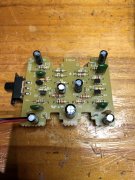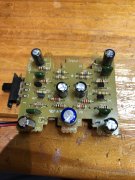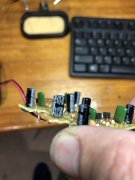derek92994
Veteran and General Yakker
Some good ideas there, will place an order with mouser once we figure out what to change. Work has been the priority for me lately.



Lee, what does zee frequency mean?Darcy, a lot of those caps zee frequency dependent except the big values I believe...
Darcy, a lot of those caps zee frequency dependent except the big values I believe...[/QUOTE
Meaning if they are not part of the power supply, and are in the signal path I wouldn't mess with the UF number...
2SC1740Just did a quick search of "C1740" on Mouser and did not find those... I am inclined to think TI makes a much quieter replacement 40 years later...
What did you change uf values?
Darcy, a lot of those caps zee frequency dependent except the big values I believe...
Meaning if they are not part of the power supply, and are in the signal path I wouldn't mess with the UF number...
Mica or film caps on the rest yeah, looks like most resistors have a path to the signal somehow...
